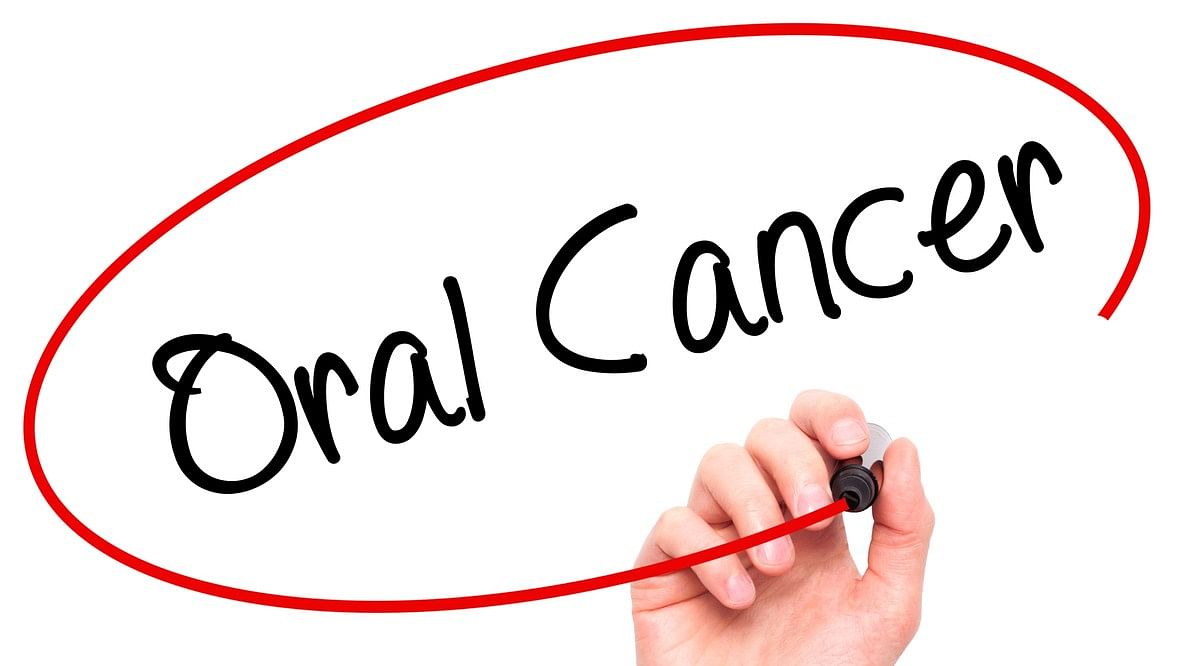
Oral cancer is the sixth most common cancer worldwide with India contributing to one-third of the total burden. Every year there are more than 3,50,000 new cases that are diagnosed globally and 177,000 deaths occur, though with significant geographic and risk factor variations. In India, every year around 1,36,000 new cases and about 57,000 deaths are reported. Oral cancer is the most common cancer in India, accounting for over 30 per cent of all cancers. We are on the brink of an oral cancer epidemic.
A majority (60-80 per cent) of oral cancer patients present at an advanced stage, which would have significant impact on cure rates, important functions like chewing, swallowing, speaking and breathing are severely hampered.
Oral squamous cell carcinomas (OSCC) contributes over 90 per cent of all oral cancers. It commonly arises from potentially malignant lesions such as oral submucous fibrosis, leukoplakia (whitish patch), erythroplakia (reddish patch), oral lichen planus (a chronic inflammatory autoimmune disease), proliferative verrucous leukoplakia are the most common, and are currently known as oral potentially malignant disorders (OPMDs). Early detection and management of OPMDs is necessary to minimise or even eliminate the risk of transformation into oral cancer.
Some important causative factors for oral cancer
Tobacco consumption in any form: Tobacco, beedis, cigarettes, hookah, cigars, e-cigarettes, smokeless or chewable tobacco, pan masala, gutkha, paan, betel quid, betel nut, khaini, mishri, mawa, kharra, zarda and snuff.
Alcohol use
Poor oral hygiene
Sharp tooth or an ill-fitting denture causing chronic irritation to oral mucosa
Diet low in fresh fruit and vegetable intake.
About 85-90 per cent of oral cancers are related to tobacco and alcohol use, which are the two most important risk factors. As per the Global Adult Tobacco Survey India, 35 per cent of the adult population in the country consumes tobacco in one form or the other.
Signs and symptoms of oral cancer
White, or red patch in the mouth
Persistent or non-healing sores or ulcers in the mouth for > 2-3 weeks
Swellings or lumps on lips, gums, or other areas inside the mouth, and in the neck or unexplained numbness
Difficulty in chewing or swallowing
Dentures not fitting or become uncomfortable
Difficulty in moving the tongue or progressive decreased mouth opening
Oral cancer can be detected by:
A proper physical examination of the mouth and neck regions to look for any suspicious changes in the oral cavity and enlarged or significant lymph nodes in the neck.
A biopsy is the gold standard for diagnosing oral cancer. A tissue sample is taken from the most representative portion of the suspicious oral lesion, and sent for histopathological examination.
Computed tomography (CT), magnetic resonance imaging (MRI) or positron emission tomography (PET) CT Scan can be used to diagnose oral cancer.
Surgery is the mainstay for curable oral cancer.
It removes cancerous growth and involved structures in the oral cavity with proper margins.
Surgery alone would suffice in early stage (Stage I & II) cancer treatment. But, for advanced stages (Stage III & IV), a multi-disciplinary management involving upfront surgery, followed by either radiation or chemoradiation will be required as part of the curative treatment.
By early diagnosis and proper treatment of oral cancer, cure rates can be as high as 85-90 per cent. It would also significantly lower the cost and improve the functional and cosmetic outcomes associated with treatment.
Tobacco use is the single most important modifiable risk factor in oral cancer. Don’t give up! Oral cavity cancer is a potentially preventable condition due to its relationship with familiar risk factors and easy detectability.
(The writer is consultant, head and neck oncology)